Kids Bike Sizes: The Easiest Way to Find the Best Fit
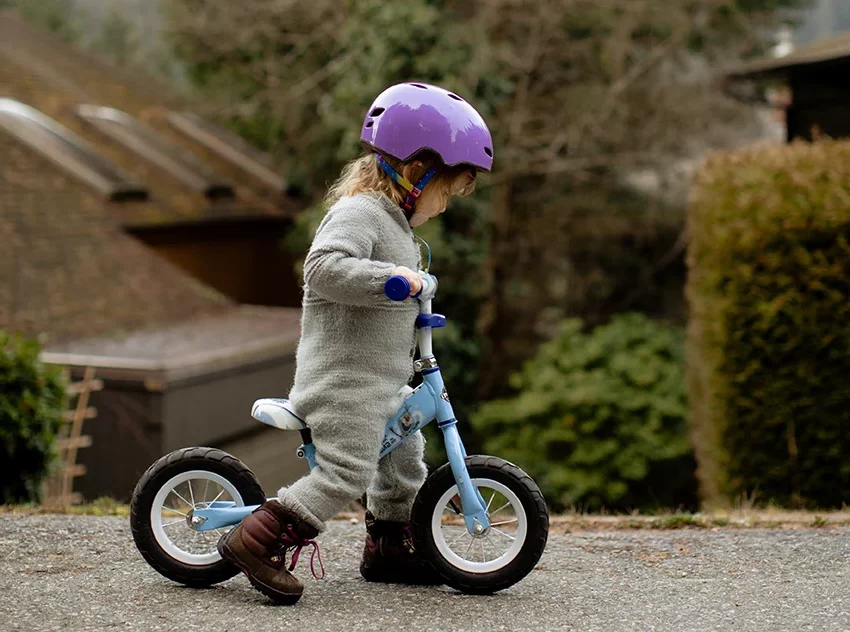
When it comes to finding the perfect bike for your kid, understanding kids’ bike sizes can feel like a whole new world of complexities.
This is especially true if you’re used to selecting bikes based on adult sizes and you want to use that approach when choosing your kid’s bike size.
Unlike bicycles for adults, which are typically sized according to frame size, kids’ bike sizes are usually determined by wheel size.
But that’s just one side of the story. Other factors, such as standover height and min/max seat post height play important roles as well.
Our guide below will help you demystify the world of kids’ bike sizes, helping you choose the right one and keep your child pedaling happily and safely for years.
Kids’ Bike Sizes Explained: A Word of Caution
Key takeaway: Rather than solely relying on wheel size to determine a child’s bike size, incorporate standover and seatpost heights into your decision-making process to account for individual variations in children’s growth rates.
As a general rule of thumb, kids’ bike sizes are determined based on the bike’s wheel size. Therefore, most of the best kids’ bikes are available in one of the following sizes:
- 12″ kids’ bikes
- 14″ kids’ bikes
- 16″ kids’ bikes
- 18″ kids’ bikes
- 20″ kids’ bikes
- 24″ kids’ bikes
- 26″ kids’ bikes
While the bike’s wheel size can provide a rough estimate of the suitable age or height for riders, it only accurately predicts this in a limited number of cases. We are talking more about this issue in our 26-Inch Bike for What Size Riders and 24-Inch Bike for What Size Person guides, so we recommend reading them.

Naturally, not all kids are the same or grow at the same speed. Therefore, one 5-year-old can be taller or have a longer inseam than another 5-year-old. Moreover, that same 5-year-old may be taller than a 7-year-old.
That’s why we need to look at the bike’s standover height and min/max seatpost height as well. These are the measurements that will tell us if a particular bike would actually fit our child.
Despite that, our email inbox is full of questions like the ones you see below:
- What size bike for a 3-year-old?
- What size bike for a 4-year-old?
- What size bike for a 6-year-old?
- What size bike for a 7-year-old?
But now you understand that these are flawed questions that are very hard to answer with certainty, as each child is different and reaches different heights and inseam lengths at different times.
Kids’ Bike Size Chart
Now that you have a better understanding of the complexities of choosing the right bike size, you can use our kids’ bike size chart below as a starting point to narrow down your choices.
| Wheel Size | Age | Height | Inseam | Height CM | Inseam CM |
|---|---|---|---|---|---|
| 12" | 2 – 3 years | 2’10”-3’5” | 14-17” | 86.36 - 104.14 cm | 35.56 - 43.18 cm |
| 14" | 2 – 4 years | 3’2”-3’7” | 16-20” | 96.52 - 109.22 cm | 40.64 - 50.8 cm |
| 16" | 4 – 6 years | 3’7”-4’1” | 18-22” | 109.22 - 124.46 cm | 45.72 - 55.88 cm |
| 18" | 5 – 7 years | 3’9”-4’4” | 20-24” | 114.3 - 132.08 cm | 50.8 - 60.96 cm |
| 20" | 7 – 10 years | 4’1”-4’5” | 22-25” | 124.46 - 134.62 cm | 55.88 - 63.5 cm |
| 24" | 10 + years | 4’5”-4’9” | 24-28” | 134.62 - 144.78 cm | 60.96 - 71.12 cm |
Kids’ Bike Sizes: How to Find the Right One
You’ve chosen the approximate bike size for your kid based on the table below, but there are a few more things to consider before you can click the buy button. Check out the four steps below to fine-tune your selection and get the perfect size.
1. Measure Your Kid’s Height and Inseam Length
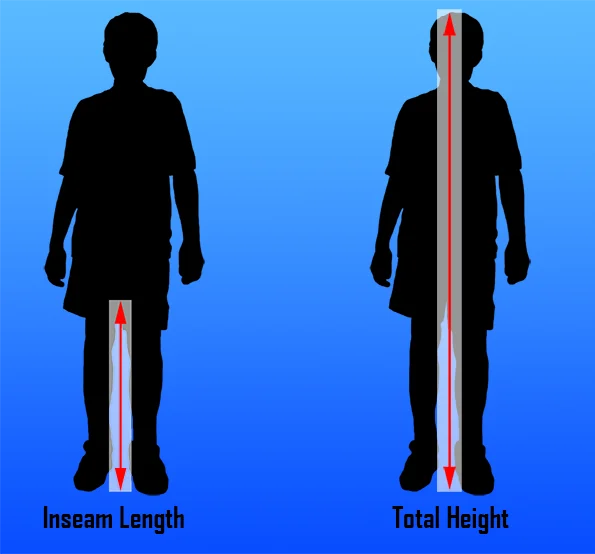
The first thing to do in order to size a bike for a kid is to measure their height and inseam length. This is a very important step, so don’t try to ballpark it.
- To measure your child’s height, have them stand with their back against a wall, legs together, and place a book on top of their head. Measure the distance from the floor to the bottom of the book and write it down.
- To measure the inseam, have your child stand against a wall with their shoes on, legs apart slightly, as if when riding a bike. Have them hold a book as close to their crotch as possible and measure the distance from the floor to the top of the book.
If you’ve done the measurements in centimeters, it’s a good idea to convert them to inches for easier referencing, as most manufacturers display their measurements in inches.
2. Check the Bike’s Standover Height and Minimum Seatpost Height
Key takeaway: Match your child’s inseam to the bike’s standover and seatpost heights, keeping in mind that standover should be less by 1-2 inches and seatpost height depends on the bike type and child’s biking skill.
Now that you know your kid’s inseam and height, you can move to the next step, which is to compare it to the bike’s standover height and minimum seatpost height.
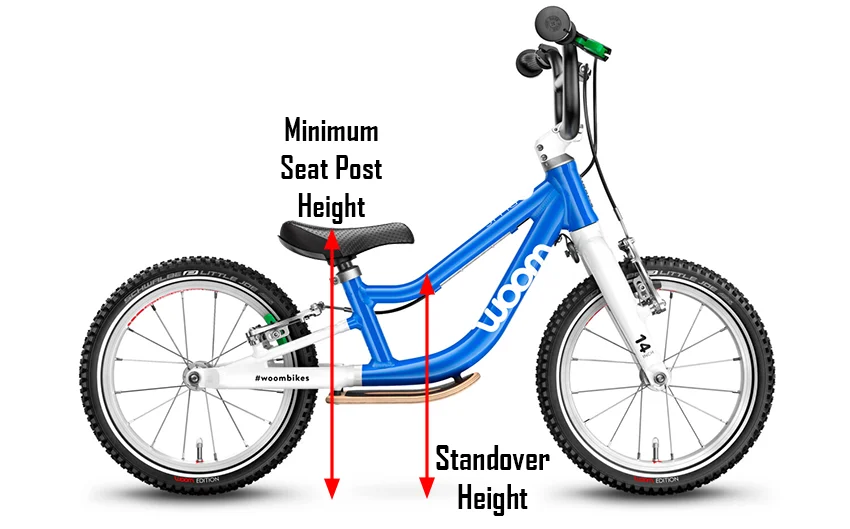
The bike’s standover height is the height of the top tube measured from the ground.
For your child to comfortably stand above the bike with one leg on each side, the standover height needs to be at least 1-2 inches shorter than your child’s inseam length. Otherwise, your child won’t be able to mount and dismount the bike properly and may even injure themselves.
The next thing you need to consider is the minimum seatpost height, which will determine whether or not your child will be able to reach the ground with their feet when sitting on the bike.
But, comparing the inseam to the bike’s minimum seatpost height depends on how experienced your child is at riding and what kind of kids’ bike you’re buying: a balance bike, first pedal bike, or a pedal bike for an experienced rider.
- If you’re buying a balance bike, the minimum seatpost height should be no higher than the kid’s inseam length. For example, if your child has a 14″ inseam, the balance bike should have a minimum seatpost height of 14″ or shorter. This will allow your child to put their feet flat on the ground when seated, giving them more confidence and control over the balance bike.
- If you’re buying a first pedal bike, the difference between the inseam and the minimum seatpost height should be no more than 1″. Ideally, the inseam should be at least as long (or longer) than the seat height as kids who transition from a balance bike to a pedal bike lack confidence and want to be able to easily reach the ground.
- Finally, if you’re buying a pedal bike for a confident rider, the minimum seat post height can be 1-3″ longer than your child’s inseam. This will allow them to turn the pedals comfortably while still being able to easily reach the ground for stability and safety. Avoid going over the 1-3″ mark as your kid will struggle to ride and potentially get hurt.
You can find the standover height and the minimum/maximum seatpost height on the manufacturer’s website. Almost all reliable brands have these measurements clearly stated; if they don’t, you should avoid trying to make an educated guess and do your shopping elsewhere instead.
3. Buy for Your Kid’s Current Growth
Key takeaway: Buy a bike that suits your child’s current size for safety, comfort, and skill development, not a larger one they’ll grow into.
Many parents think that buying a larger bike that their child will grow into is a savvy and forward-thinking choice. The bike will last a few more years and you’ll save money in the long run, right?
Well, it’s not that simple. This approach can do a lot more harm than good.
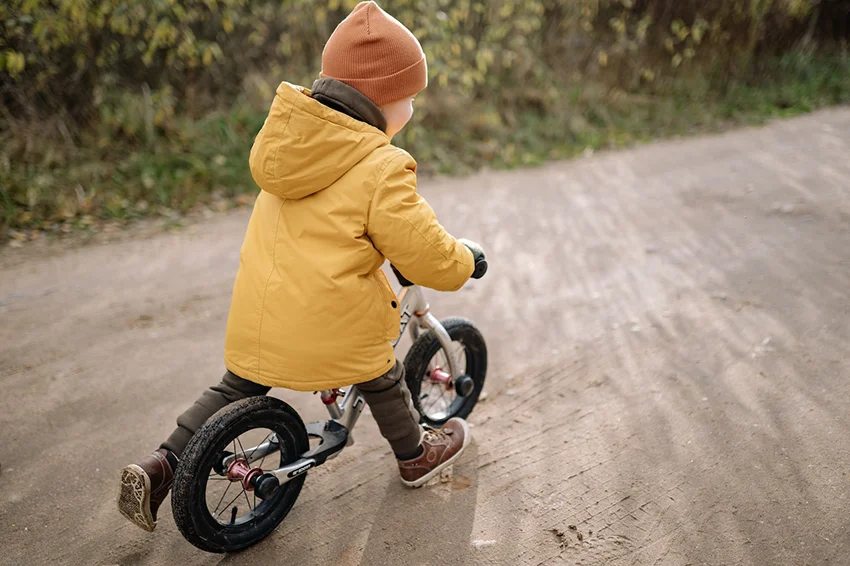
Buying a bike for your kid’s current size is crucial, and here’s why: confidence and comfort. Riding a bike that’s too big means that your child will not be able to comfortably and confidently touch the ground with their feet.
In addition to being daunting and possibly unsafe, this won’t help any child to fall in love with riding a bike. On the contrary, it will impede your child’s ability to develop crucial biking skills.
Kids on appropriately sized bikes can reach the ground with their feet, reach the handlebars without straining, and easily maneuver the bike. This is a critical step in making their biking experience enjoyable.
In the end, a few extra dollars spent on a suitably sized bike now will pay dividends in your child’s safety and biking proficiency later on.
Knowing this, it’s not hard to conclude that the best bike for your child is the one they feel most comfortable riding now.
4. Consider the Right Type of Bike for Your Kid’s Riding Ability
Key takeaway: Select the appropriate bike—be it balance, single-speed pedal, or geared pedal—based on your child’s current skill level to effectively and gradually enhance their biking abilities without overwhelming them.
Buying the correct type of bicycle for your child is just as crucial as buying the right size. The type of bike you choose should align with your child’s current biking skills to ensure they can gradually improve their riding abilities.
Buying a bike that’s too advanced means they will feel overwhelmed and struggle to grasp the concepts of pedals, brakes, gears, and more.
The three types you can commonly choose from are:
- Balance Bike
- Single-Speed Pedal Bike
- Geared Pedal Bike
Balance bikes are the best starting point for small riders who still don’t know how to ride a bike. They can be ridden by kids as young as 2 years, and are the perfect stepping stone towards pedal bikes. Balance bikes don’t have pedals and their saddles are close to the ground, so kids push themselves with their feet and gradually learn how to balance and steer. This is exactly how to teach a kid to ride a bike in the most natural way possible.
Here are the balance bikes we recommend:
A single-speed pedal bike is the next step once your child has mastered steering and balancing on a bike without pedals. These bikes have pedals and brakes, but don’t have gears. This way, children can focus on learning how to pedal and brake, without having to also figure out how to shift gears, which can be overwhelming.
Here’s what we recommend:
Finally, a geared pedal bike is the next step, suitable for children who already have solid biking skills. These bikes have pedals, brakes, and gears, allowing the rider to adapt to different terrains and speeds. This is slightly more complex to understand, so the child needs a certain level of riding ability and needs to be sufficiently old to be able to understand how gears work.
Here are some suitable recommendations:
- Best 20″ Boys’ Bikes for 5-to-9-Year-Olds
- 8 Best Kids Full Suspension Mountain Bikes
- Best Kids Mountain Bikes
So, by buying the right type of bike for your child’s current riding ability, you will ensure that they are not overwhelmed and can enjoy cycling safely by gradually improving their skills.
How to Choose When Your Child Is In Between Sizes
Key takeaway: When picking a bike for a child who fits between two sizes, go for the bigger one if they’re used to riding, but with a beginner’s bike, it might be better to wait or find a smaller one first.
We’ve told you to always buy the right bike size for your child, but what should you do if they fall in between two sizes?
You may be surprised to learn that this happens very often. The smaller bike is too small and your child will outgrow it quickly, but the bigger bike is too big and it might be daunting to ride.
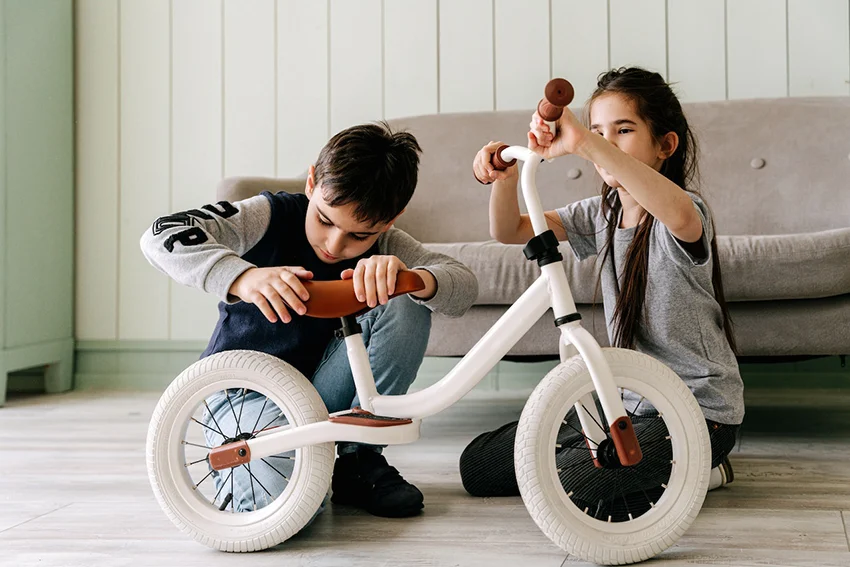
Well, if your child’s inseam is pretty close to the bigger bike’s minimal seat post height, you can just go ahead and buy the bigger bike. Though, before doing that, make sure that the standover height is lower than their inseam, to ensure they can comfortably stand above the bike.
Buying a slightly larger size shouldn’t be a problem, especially if you are buying a pedal bike for a child that is already an experienced rider.
If you’re buying their first balance bike, it’s good to be a bit more wary. If you can, try to borrow a smaller-size balance bike from a friend for a few months until your child grows a bit more, or wait a few months before making the purchase.
Finally, consider how athletic and adaptable your child is. If you think they are going to be able to handle a larger and heavier bike, then go ahead and buy it.
Conclusion
Navigating the world of kids’ bike sizes may seem daunting at first, especially if you’re used to adult sizes. But with this comprehensive guide, we hope that the process is now more manageable and less intimidating.
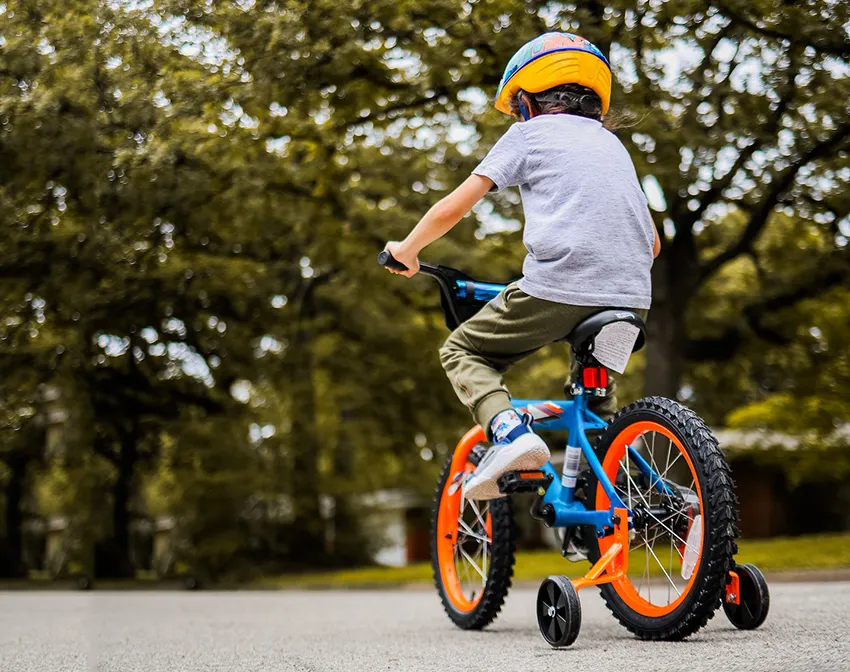
The key is to remember that while wheel size offers a rough starting point, other measurements such as standover height and seatpost height are more indicative of a good fit.
It’s crucial to keep in mind that the right bike is one that your child feels comfortable and confident riding. Buying for their current size and ability, rather than future growth, will ensure they can safely enjoy the ride and develop crucial biking skills.
In case your child is in between sizes, feel free to opt for the bigger bike as long as the minimum seatpost height closely aligns with your child’s inseam. However, keep a close eye on their comfort and confidence during initial rides.
Ultimately, our goal is to keep your child pedaling happily and safely for years to come. Happy biking!

